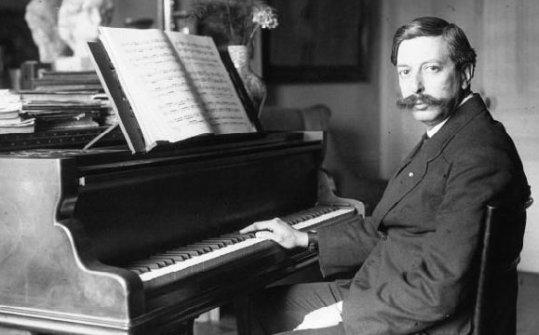For years, Granados personally and professionally met with different artists in Barcelona and Paris: Francesc Miralles (1848-1901), Santiago Rusiñol (1861-1931), Ramon Casas (1866-1932), Joaquim Vancells (1866-1942), Josep M. Sert (1874-1945), Lluïsa Vidal (1876-1918), Ismael Smith (1886-1972). On the other hand, his musical reading of the oils and engravings of Francisco de Goya (1746-1828) is still applauded. Granados himself made some drawings and some small format pictures. His vocation was humanist and multifaceted. But among the different collaborators he had during his career, Apeles Mestres (1854-1936) embodied this Renaissance profile like no one else. Above the friendship, the affinities between the two defined a characteristic profile of Modernism: the desire for the total work of art and the dialogue of the integrated arts. The decision to compose Goyescas is explained in this ideological and concrete context.
For this reason, the focus of the exphibition reinforces the need to overcome a consolidated discourse that reduces Granados to a brilliant pianist and to the founder of a school of interpretation, without denying the validity of these two statements. In order to transmit this claim of Granados in its historical and aesthetic context, the exhibition invites you to come across portraits, drawings and paintings almost on a human scale made from photographic and artistic copies of large format. The intention is to propose a hyperrealistic encounter to the visitor from the bodies and spaces of the past. At the same time, the exhibition set up is inspired by the ancient museographies of the Prado, the Louvre and the Palace of Fine Arts in Barcelona. In the same way that Granados visited museums and strolled through the workshops in Paris, Madrid and Barcelona, so the current viewer is immersed in a journey that culminates in the personal reading of Goya by the composer.



